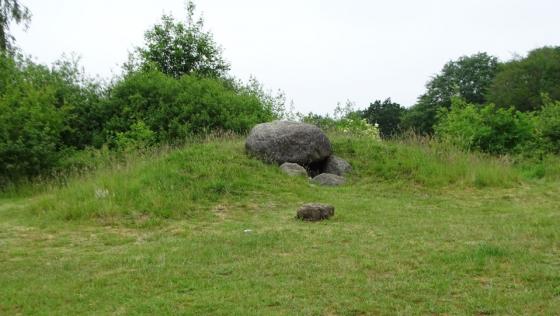The reconstructed megalithic tomb of Schalkholz is now in Heide, namely in the city park between the water tower and the central bus station. However, the tomb was originally located in Schalkholz, 10 kilometers away. The grave was excavated there in 1969.
In the course of the work, a burial chamber made of large boulders was uncovered. This consisted of nine supporting stones that formed an oval floor plan. The chamber enclosed an interior of approximately 3.5 x 2.2 meters. Of the capstones, only one erratic boulder was left over the last support stone in the northern section. In the south of the chamber an approximately 1 meter long and approximately 0.6 meter wide corridor was exposed, which ran obliquely to the chamber axis. Neither was there any more of the capstones in the corridor. A doorstep stone was documented between the grave and the chamber, on which remains of a possible sealing of the grave with clay and field stones were observed. On the floor inside the grave was a pavement of flat, hewn field stones covered with a layer of glowed flint. The spaces between the large boulders were closed with carefully executed dry masonry. From the outside, the burial chamber was surrounded by a mud coat up to the level of the capstone. A diameter of 14 meters and a height of 0.80 meters were found for the hill of the passage grave.
The passage grave, which was endangered at its original location, was relocated in 1970, shortly after the excavation, and was rebuilt in the Heide city park with the help of the Bundeswehr.
By relocating to a public park, the atmosphere suffers a little, on the other hand the grave is easily accessible. So if you are in the area, you should definitely plan a visit.
Visited June 2020










